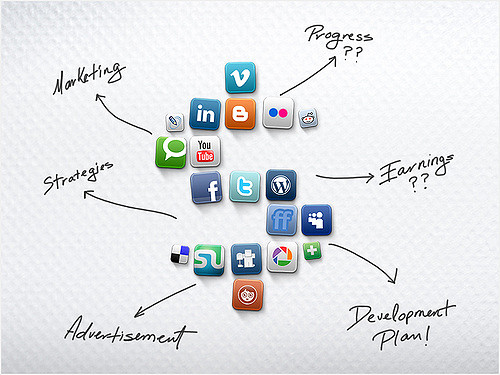Here’s how marketers can launch a B2B social media program that grows business.
A recent Harvard Business Review article discloses that a number of B2B CEOs still believe social media isn’t right for them, that it’s a tool for the B2C segment. In reality, many B2B marketers successfully leverage social media to engage potential customers, gather market intelligence, build brand awareness and reputation, discover and intercept customer problems, and influence purchasing decisions before sales calls are ever made.
In short, if you are not in the B2B social media game, you are missing out on enormous business opportunities.
Getting started with social media can seem like an intimidating task, especially if your C-suite is skeptical of the benefits. Here are six steps to launching a B2B social media program that will grow your business to its full potential.
1) Speak in the right terms.
Convincing management that you want your team to spend more time on social media to gain “followers” or get “shares” might be a hard sell. To win support, focus your argument around the factors that are most important to them. Lead generation, lead nurturing, conversions, sales, ROI, profits: this should be the vocabulary with which you approach this conversation.
2) Create a strategy — and put someone in charge.
Only 11% of companies without a documented content marketing strategy find their efforts to be successful, compared to 60% of companies with a strategy in place. And that number rises to 86% when the company designates someone to lead the strategy. Working with an experienced marketing consulting firm, like Fronetics, you can develop an inbound marketing strategy that aligns with your business objectives. And whether someone on your team heads up execution or you outsource that responsibility, the leader should continually monitor analytics and tweak the strategy accordingly. Which brings us to…
3) Determine which analytics to track.
In the B2B world, it’s not about shares, likes, or impressions, though those numbers speak to your brand exposure. (Read more about so-called “vanity metrics” here.) Leads generated, conversion rates, sales, and ROI are going to be the things you’ll want to track. If you have a good, flexible strategy in place, these metrics will help you adjust your efforts to ensure you’re achieving your business objectives.
See: The Six Marketing Metrics Your Boss Actually Cares About.
4) Develop quality content.
Twenty-seven million pieces of content are shared every day — and a large portion of it is crap. A social media presence could be pretty pointless unless you’re using it to push content that is original, high quality, and representative of your brand. One of the biggest mistakes B2B companies make is using social channels to push a sales pitch. You’ll quickly lose your audience, who is turned off by a strong sales pitch. Social media is about engaging your audience, building brand awareness, and offering valuable information.
See: Three Elements of Good Content.
5) Decide which channels are right for your business.
Who are you trying to reach, and what are you trying to tell them? These are good questions to ask when trying to determine which platforms will comprise your social media program. There’s a wealth of information out there about which channels are used by whom and when. You’ll also want to choose channels that you’ll be able to maintain regularly and which play to your strengths. As an obvious example, if you don’t have the capability to make videos, YouTube probably isn’t for you. Remember, you’ll likely want to work through several different channels to reach a maximum number of potential customers.
See: Which Social Media Channels Should Your B2B Business Use?
6) Follow your competitors.
Following your competitors is a great way to stay up to date on what they’re doing, especially if you don’t have a ton of time or money for competitive research. And when I say “follow,” I don’t mean “copy or imitate.” I mean subscribe to their blogs, engage with them on social media, and like and share their content that you find meaningful for your audience. This way, you become part of the industry conversation happening online, and you know exactly what your potential customers are seeing from (and how they’re reacting to) your competitors.
See: The Role of Social Media in Supply Chain Intelligence.
Related articles:
- The Best Time to Post on Social Media
- 25 Ways to Generate More Leads Using Social Media
- Content and Social Media: A Perfect Match for Customer Engagement and Business Growth
- Supply Chain: Here’s How to Prove Social Media ROI

